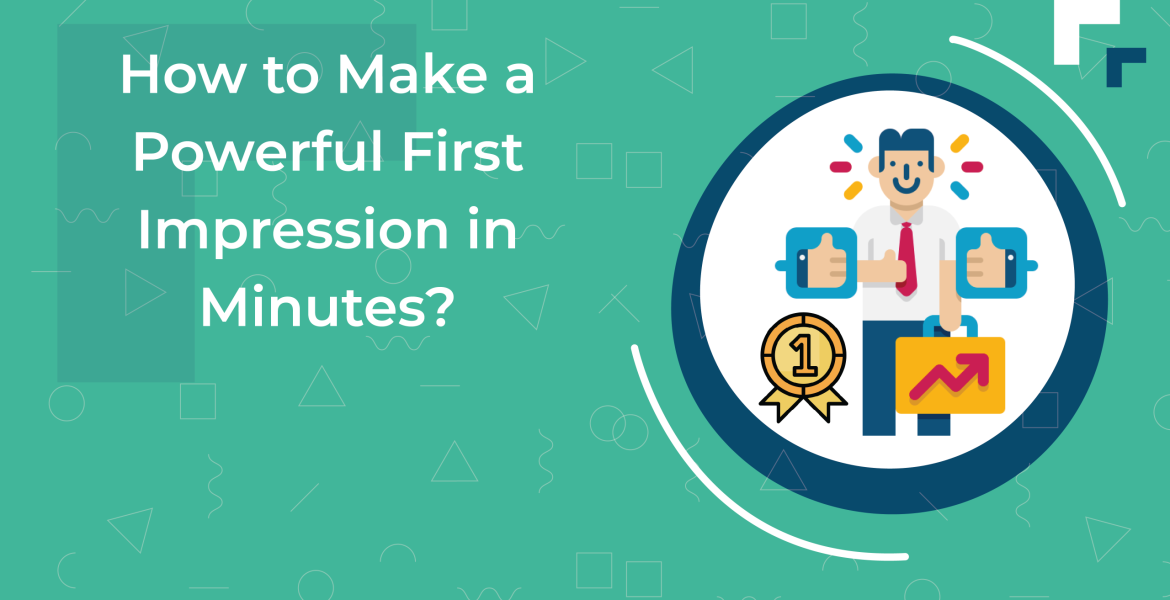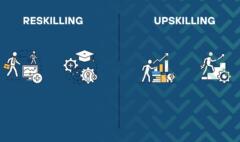How to Make a Powerful First Impression in Minutes?
Introduction
Imagine meeting someone for the first time whether it’s a manager at a job interview, a potential client, or even someone at a social event in just 7 seconds, they might form a complete, positive or negative impression of you, without you uttering a single word!
This is the power and the danger of the first impression.
In today’s competitive world, where opportunities are scarce, that first impression is like a golden ticket or a gateway to opportunities. It doesn’t only shape how others see you in that moment but may determine how they treat you thereafter.
A first impression isn’t just about your appearance; it’s a mix of your look, body language, speaking style, and even how well you listen.
Why First Impressions Matter in Life and Work
A first impression is like your personal signature in front of people.
- At work: A positive first impression can earn you the trust of colleagues and managers.
- In social settings: It can make you more likable and influential in your circle.
Research shows that people tend to confirm their first impressions later on whether they were accurate or not.
How Quickly Are First Impressions Formed?
Contrary to what some believe, first impressions form in an instant often before you speak. The good news is you can influence them consciously through practical steps:
- Visual impression (appearance and attire): within 1–3 seconds.
- Behavioral impression (body language and actions): within the first minute.
- Verbal impression (words and tone): as soon as you start speaking.
The Impact of Your Appearance on First Impressions
Choosing Appropriate Attire
Your clothes send a message before you speak. For:
- A job interview: opt for formal or semi-formal wear suited to the company culture.
- A social occasion: choose elegant but understated attire.
Practical tips:
- Observe the dress norms where you’re going.
- Wear comfortable clothes so you don’t appear tense.
- Avoid excessive accessories.
Personal Grooming and Details Matter
Even stylish clothing can be undermined by poor grooming. Pay attention to:
- Hair, nails, and oral hygiene.
- Clean, polished shoes add a professional touch.
- A subtle fragrance leaves a memorable presence.
The Role of Color
Colors speak a silent language:
- Dark blue: conveys trust and professionalism.
- Black: radiates power and seriousness.
- White: signals purity and clarity.
- Bright colors: reflect creativity and openness (use cautiously in formal settings).
Want a quick positive impact? Choose colors that match your message and setting.
Body Language: Shaping the First Impression
Genuine Smile Breaks the Ice
A warm, authentic smile is your fastest way to ease tension.
- Avoid fake smiles they’re easy to spot.
- A sincere smile conveys warmth and invites interaction.
A Firm Handshake Speaks Confidence
The perfect handshake is firm but not crushing; lasts 2–3 seconds, and includes eye contact.
- Too weak implies insecurity.
- Too strong can feel aggressive.
Eye Contact: Build Instant Trust
Looking someone in the eye shows you’re present and engaged.
- Avoid staring; don’t look at the floor or phone.
- Balanced eye contact establishes connection.
Posture and Gestures
- Stand or sit upright to exude confidence.
- Avoid crossing arms, which can signal defensiveness.
- Use natural hand movements overdoing them can distract.
Introducing Yourself Smartly
A concise and impactful intro
When presenting yourself, keep it brief but meaningful:
- Your name.
- Your role or profession.
- A short note about your expertise or mission.
Example:
“Hello, I’m Ahmed, a digital marketing consultant helping businesses boost sales through innovative strategies.”
Voice and Delivery
- Use a clear, well modulated voice not too loud nor too soft.
- Speak at a moderate pace, with thoughtful pauses to convey calm confidence.
Avoid Common Pitfalls
- Talking too fast due to nervousness.
- Using vague or generic expressions.
- OMITTING details that differentiate you.
Show Interest in Others to Strengthen the First Impression
The Power of Active Listening
In a first encounter, people often value being heard more than hearing about you.
- Listen attentively, without interrupting.
- Use body language to show engagement (nodding, leaning forward).
- Reflect back what you hear with phrases like “I understand…”.
Use the Other Person’s Name
- Address them by name: “Pleasure to meet you, Mohammed.”
- Reuse their name naturally in conversation: “That’s insightful, Mohammed.”
Ask Thoughtful, Open Questions
Instead of focusing on yourself, ask:
- “How did you find your experience in this field?”
- “What challenges are you facing recently?”
These invite the other person to share more, helping build connection.
Managing the Critical First Moments
Focus on Essentials
In those first few minutes, share your key strengths, values, or the purpose of your interaction.
- Avoid excessive detail that may distract.
Don’t Overshare
Talking too much about yourself can seem arrogant.
- Balance is key: aim for a 50/50 split between you and the other person.
- Highlight shared topics to build rapport.
Be Concise and Impactful
Choose your words carefully and condense your message without losing power.
- Avoid filler or repetition.
Common First Impression Mistakes
Overconfidence | Extreme Shyness
- Too confident can read as arrogant, too shy as inept.
- Strike a healthy balance of confidence and humility.
Closed Body Language
- Crossing arms, looking down, or fidgeting signals stress or disinterest.
- Opt for open posture and natural gestures.
Sensitive or Controversial Topics
- Avoid discussing religion, politics, or highly personal topics.
- Stick to safe, neutral conversational ground.
Pro Tips for Strong Impressions in Professional Settings
Interview Preparation
- Research the company’s values, products, and culture.
- Practice concise answers to common interview questions like “Tell me about yourself.”
- Dress appropriately and aim to arrive early punctuality signals seriousness.
- Pro tip: Bring printed copies of your CV even if a digital version is available.
Formal Meeting Etiquette
- Greet with a sturdy handshake and eye contact.
- Wait to be invited to sit this shows respect.
- Listen before responding, never interrupt.
- Avoid phone distractions and step away with an apology if needed.
Conferences and Panel Settings
- Have brief notes ready in case you speak.
- Ask insightful questions to demonstrate engagement.
- Display positive body language, sit upright and smile.
- Follow up afterward with a thank-you or a brief message to reinforce your presence.
Actionable Strategies for Strong First Impressions
- Prepare in advance: research, rehearse, and dress the part.
- Project confidence through non-verbal cues: smile, direct eye contact, upright posture.
- Communicate clearly: brief, strong self intros, and allow space for others to speak.
- Show genuine interest: ask thoughtful questions and actively listen.
Conclusion
First impressions are not random; they result from deliberate attention to detail and awareness. In a matter of minutes, you can plant seeds of trust, respect, and genuine connection. Make every initial encounter a bridge to success.
Frequently Asked Questions (FAQs)
- How long does it take to form a first impression?
Typically 7 seconds to a minute, depending on the context and interaction. - Can you change a negative first impression?
Yes but it requires significantly more effort and time to overcome. - Which body language cues matter most?
Smile, eye contact, and upright posture are key to making a positive impact quickly. - Is wearing expensive clothes necessary?
No. What matters more is cleanliness, coordination, and appropriateness of attire to the setting. - How do you balance confidence with humility?
Show self-assurance in your posture and tone, yet remain attentive and respectful by actively listening and valuing the other person.






